

Clematis cirrhosa, or Early virgin’s-bower, is a clematis with fragrant winter flowers.
Key Evergreen clematis facts
Name – Clematis cirrhosa
Common – Evergreen Traveller’s Joy
Family – Ranunculaceae
Type – Vine
Height – 6 to 9 feet (2 to 3 m)
Soil – ordinary
Exposure: full sun – Foliage: evergreen – Flowering: mid-fall to early spring
This Christmas clematis is one of the few species that bloom in winter. The range of colors is extensive, with patterns such as pink-studded cream and bell-shaped flowers. Its evergreen leafage is also beautiful: it looks like small fern leaves.
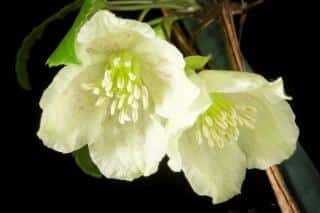
Clematis cirrhosa, like all other clematis vines, loves being rooted in a shaded spot while the head basks in the sun, especially during the winter blooming. It will still bloom even without much sun, luckily.
In summer, if sunlight hits the root collar, then cover it with an old tile or form a tent with a few flat rocks.
Cirrhosa Clematis requires some kind of structure to climb up along, it must be set at a distance of about 8 inches (20 cm) away from the root collar.
It is perfectly possible to grow your winter clematis in a pot, even though some varieties such as Clematis alpina are better suited because they grow even more slowly.
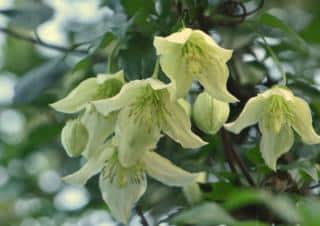
However, at some point in time, you might wish to reduce the size of the branches or balance out the growth of your Evergreen Traveller’s joy. Best do this at the beginning of spring or in fall after the blooming.
Propagation:
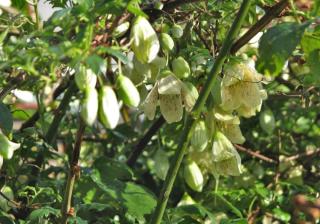
From fall through winter, you won’t need to water because rainfall will cover the plant’s needs.
However, if in pots, you’ll have to water your Evergreen Virgin’s bowler as soon as the soil feels dry to the touch.
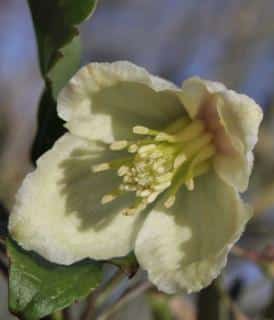
It cannot cope with excess water that might make roots rot away, either. A delicate balance to strike!
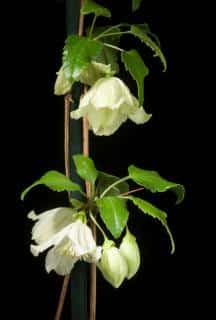
Experts place this variety in the small-flowered clematis group.
Since it’s a relatively slow grower, it’s well-suited to growing in small spaces on a terrace, for instance.
Garden stores sell a few varieties and cultivars of Evergreen traveller’s joy, but most are difficult to find.
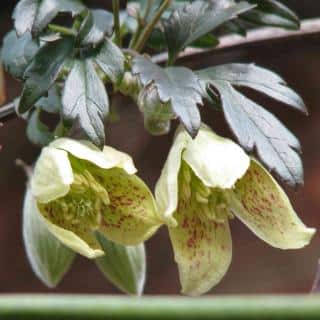
C. cirrhosa balearica has beautiful cup-shaped flowers with wine-colored freckles. The fern-like leaves stay on the vine during winter.
It blooms right in time for Christmas and New Year’s (December-January).
Like most clematis varieties, this one is also toxic to horses, cats and dogs.
You can attach your traveller’s joy clematis to a lattice to ensure it grows the way you hope it will as it develops! Clematis cirrhosa can resist freezing and cold temperatures down to 5°F (-15°C), and even -4°F (-20°C) if it’s only a short while.